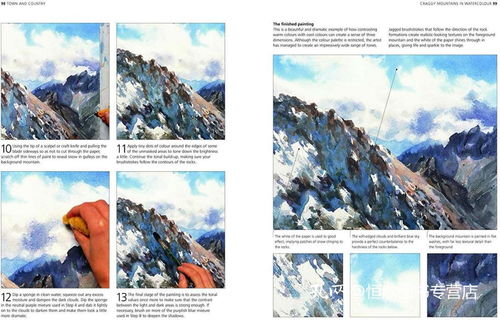Content:
In the serene embrace of a snow-covered landscape, the night air carries a crisp chill that can be both invigorating and challenging. For the intrepid anglers among us, the allure of the snow-covered waters can be irresistible. The snow-night fishing experience offers a unique blend of tranquility and the thrill of the hunt. As a Snow-Lord, I have honed my skills to become a master of fishing in such conditions. Here are some of the essential tips and techniques that I have gathered over the years.
Understanding the Snowy Night Environment
The first step to successful snow-night fishing is understanding the environment. Snow can alter the water temperature, fish behavior, and visibility. Here are some key points to consider:
Water Temperature: Snow can insulate the water, keeping it relatively warm. However, the surface may freeze, so it's crucial to find a spot where the water is flowing or well-insulated from the cold.
Fish Behavior: In cold weather, fish tend to move slower and are more likely to be found in deeper, warmer waters. Look for areas with rocks, logs, or other structures that can provide shelter.
Visibility: Snow reduces visibility, so it's important to stay near the shore or in areas where you can see your line clearly.

Choosing the Right Gear
The right gear can make a significant difference in your snow-night fishing experience. Here are some essential items:
Rod and Reel: A lightweight, sensitive rod is ideal for feeling the subtle movements of fish in cold water. A reel with a smooth drag is essential to handle the fight without causing stress to the fish.
Line: Use a monofilament line that is strong yet flexible. In the cold, lines can become brittle, so choose a line that is designed for low-temperature conditions.
Lures and Baits: Small, natural-looking lures or live bait are often more effective in cold water. Avoid large, flashy baits that can spook fish.
Clothing: Dress in layers to maintain warmth. Wear waterproof, insulated outerwear, a warm hat, gloves, and thermal undershirts.
Fishing Techniques
Once you have the right gear and understand the environment, it's time to apply some specific fishing techniques:
Patience: Snow-night fishing requires patience. Fish may be slow to bite, so it's important to stay calm and wait for the right moment.
Presentation: In low-light conditions, it's crucial to present your bait or lure in a way that mimics natural prey. A slow, steady retrieve can be more effective than a fast, erratic motion.
Reading the Water: Pay attention to the way the snow affects the water. For example, if the snow is melting and causing the water to flow faster, fish may be more active.
Using a Snow Shelter: If the weather is particularly harsh, consider using a snow shelter or a heated tent to stay warm and protected from the elements.
Checking the Line Regularly: In low visibility, it's easy to lose track of your line. Regularly check your line for any signs of movement or tension, which could indicate a bite.
Safety Precautions
Safety should always be a top priority when fishing in snowy conditions:
Tell Someone Your Plans: Inform a friend or family member of your intended fishing location and expected return time.
Check the Weather: Before heading out, check the weather forecast and be prepared for sudden changes.
Carry Emergency Supplies: Always have a first-aid kit, a flashlight, extra batteries, and a means of signaling for help.
Stay Hydrated and Nourished: Cold weather can dehydrate you more quickly, so drink plenty of water and eat high-energy snacks to keep your energy levels up.
By following these tips and techniques, you can turn a snowy night into a memorable fishing adventure. Remember, the key to success is patience, preparation, and a deep respect for the elements. As a Snow-Lord, I have learned that the most rewarding catches often come from the most challenging conditions. So, bundle up, grab your gear, and venture out into the snowy night—where the fish are waiting, and the stories are endless.












